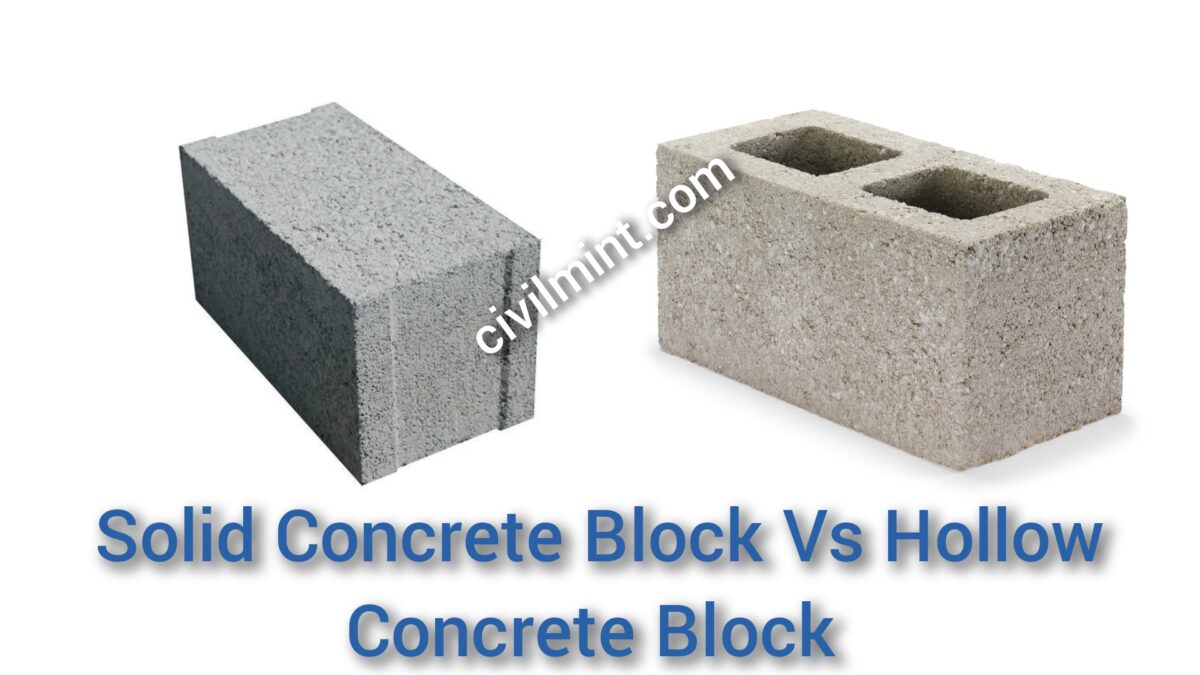Differences between solid and hollow concrete block can have a significant impact on the construction process and final structure. Solid blocks provide better sound insulation and are more resistant to damage, while hollow blocks offer lower weight and better thermal insulation.

Understanding these differences is crucial for choosing the right type of block for your construction project.
Table of Contents
Solid Concrete Block
Solid concrete block is a popular building material commonly used in retaining walls, foundations and structures. They are typically manufactured in the size of 400 mm × 200 mm × 150 mm and must meet a strength requirement of 4 N/mm2.
To reduce the weight of the blocks, no fine concrete is preferred, which means that fine aggregate is not used. Instead, round aggregates less than 12 mm in size are used. This helps reduce the density of the blocks, making them easier to handle during construction. Solid concrete blocks should have sharp edges that are at right angles to each other to ensure a safe and stable structure.
Solid concrete blocks are versatile and can be used for load-bearing wall construction. Their properties make them suitable for a range of construction applications, and their availability in a variety of sizes, shapes and finishes allows for flexibility in design and construction. Solid concrete blocks are a durable and reliable option for construction projects.
Hollow Concrete Block
Hollow concrete blocks are a type of building material made from cement, water and aggregates such as sand, gravel or crushed stone. They are formed in a rectangular shape and contain one or more hollow cores, or voids, which reduce the weight of the block and provide insulation.
There are various sizes and shapes of hollow concrete blocks, including 400 mm × 200 mm × 190 mm (nominal size 400 × 200 × 200 mm) and 400 mm × 300 mm × 190 mm (nominal size 400 × 300 × 200 mm). To manufacture hollow concrete blocks, a rich mix is required, typically containing up to 60% fine aggregate and up to 40% coarse aggregate. This structure allows the formation of a stronger and more durable block while maintaining the desired level of insulation and low weight. Hollow concrete blocks must also meet a minimum strength requirement of 4 N/mm2 and have true right-angle corners.
One of the advantages of using concrete blocks is that construction activities can be completed quickly. It also requires less mortar to finish the surface than other building materials. Just pointing is enough, which means plastering is not necessary. This makes construction activities more cost-effective and reduces the time required to complete the project.
Solid Concrete Block Vs Hollow Concrete Block: Differences
| Sr No | Solid Concrete Block | Hollow Concrete Block |
|---|---|---|
| 1. | They are solid. | They are hollow. |
| 2. | Weight of soild concrete blocks are high. | Hollow concrete blocks are low in weight. |
| 3. | Conductivity of heat is high. | Conductivity of heat is low. |
| 4. | No option to conceal conduits etc. | It provides facility to conceal conduits etc. |
| 5. | No fine concrete is preferred. | Fine aggregate is more (as high as 60%). |
| 6. | Lean mixes are used. | Needs richer mix. |
| 7. | Solid concrete blocks are expensive. | Hollow blocks are cheap. |
| 8. | Can’t be broken easily. | Can be broken easily. |
| 9. | Highly durable. | Durability is low compared to solid concrete block. |
